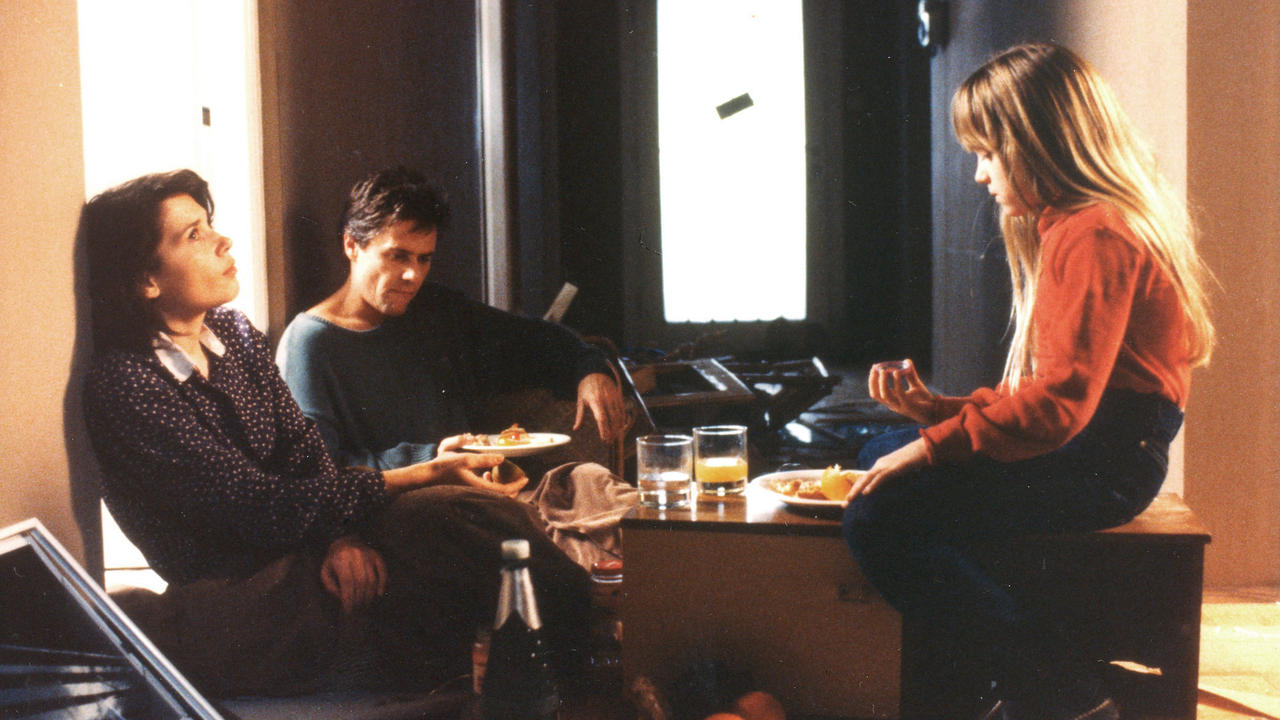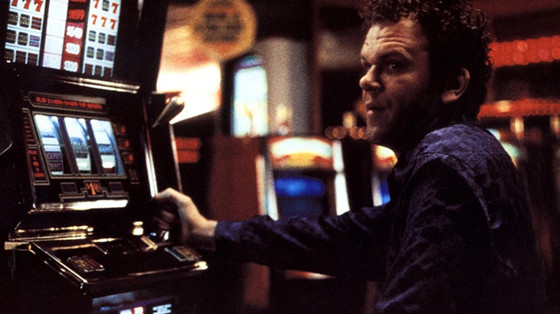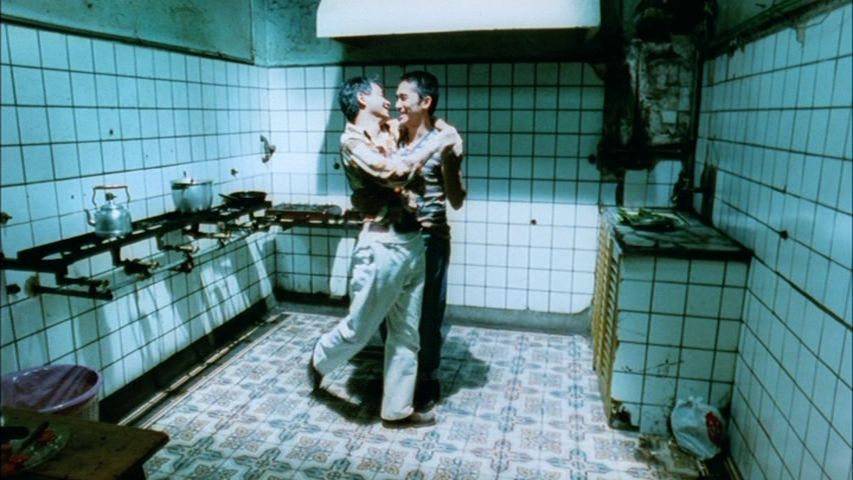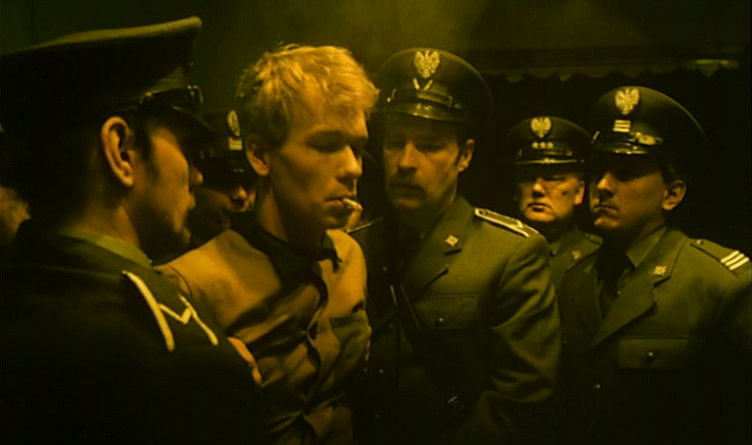6. The Seventh Continent – Michael Haneke

If one isn’t content with Michael Haneke’s 21st century offerings of bourgeois nightmare and societal disgust, fear not: his first ventures into film hold just as much disdain for the middle-class and the modern world.
After years working in TV, Haneke made his first film, The Seventh Continent, in 1989. Based on a true story according to the director himself, it details three years in the life of a well-to-do Austrian family who eventually commit suicide together: Georg, an engineer, his wife Anna, an optician, and their young daughter, Eva.
After deciding to finally escape the drudgery of their current lives by moving abroad to Australia, they instead decide to destroy themselves and everything they own with no apparent motive. Haneke takes us through their monotonous existence, bit by bit. We are subjected to their daily activities, the cold reality of their modern life.
Haneke rarely shows us the faces of the characters in the opening scenes of the film, so as to emphasize all this; the composition is rigorous. When the family finally decide to abandon their suffocating routines, they do so by first destroying the meaningless objects that fill their house.
Occupying the second half of the film, it’s a grimly enthralling experience: Haneke’s excruciating and bold style is evident as the family’s soulless destruction of everything they own is portrayed as being just an extension of their previous daily routines. They receive no catharsis or emotion from their actions. The slow, horrifying buildup to this moment created by Haneke makes for a deeply disturbing journey: no easy answers or conclusions can be found.
A lot of the themes and ideas he would go on to explore in his work are tackled here: dissatisfaction with contemporary life; the lack of human connection in the modern world; seemingly random acts of violence. The impression one gets from The Seventh Continent is of a director who knows what he wants to say and will show it under the manner he chooses. Forming a part of an informal trilogy, the Glaciation trilogy, this and the other two films examined the emotional glaciation of his native Austria.
The title of the film is a reference to Australia, the continent mentioned in the film as the family’s destination. It’s clear that Haneke finds little of worth in the modern European landscape and other solutions must be sought. A clinical and chilling presentation of his worldview, The Seventh Continent feels like the work of a psychological master only getting started in shocking and provoking his audiences.
7. Hard Eight – Paul Thomas Anderson

A supremely confident debut by a future American master, Paul Thomas Anderson crafted a sparse neo-noir crime drama back in 1996. The film follows an old gambler, Sydney, who begins to help a downtrodden young man named John after meeting him at a diner in Nevada. He teaches him how to be a successful conman and gambler.
As it’s a crime thriller, there is certainly plot here: John falls in love with a cocktail waitress Clementine, they experience trouble with her clients, and it soon transpires Sydney is keeping a secret regarding his altruism, which is threatened to be revealed by a local named Jimmy. However, the plot seems secondary to what is, essentially, a mood and character piece.
The events are pulled back and the ensemble is allowed to carry the film: veteran Philip Baker Hall gives a compelling and overlooked performance as Sydney and holds the audience’s attention throughout; Samuel L. Jackson creates his usual strong and noticeable persona; Gwyneth Paltrow and John C. Reilly are also given opportunities to shine. The dialogue and acting seem perfectly entwined, and we the audience are enthralled by the compelling characters and their story. Each one feels like an entirely believable hardened, lonely denizen of the casino city.
Signs of Anderson’s signature techniques can be seen in Hard Eight, too, and it’s a pleasure to witness their start here. A significant long take in the middle of the film brings out all the paranoia of the atmosphere. His ability to bring out the best in his actors has been noted. While not grand enough to receive overwhelming acclaim, Anderson’s film resonates despite its minimalism: it’s a reminder that economical, understated drama can still satisfy, if the storytelling and performing is suitably excellent.
8. Ivan’s Childhood – Andrei Tarkovsky

Andrei Tarkovsky’s first feature, Ivan’s Childhood (1962) is a film that he admitted “helped to form my views.” The film was highly received upon its release – it won the Golden Lion at the Venice Film Festival – but it’s an often-overlooked work compared to Tarkovsky’s undisputed masterpieces like Andrei Rublev (1966) and Stalker (1979).
At this time, it was commonplace for Soviet filmmakers to enter the mainstream via the War genre, as these were the most likely to receive international recognition. After taking over control of the project from others, Tarkovsky soon aimed to turn the conventional source material into a darkly poetic vision of war and its effects, and this refashioning of the original plot is what elevates Ivan’s Childhood above being a standard genre film. Dream sequences were incorporated, slicing the depressing frontline action with moments of melancholic reverie.
Tarkovsky emphasizes the connection between reality and dream. For a film surrounding a 12-year-old boy caught up in the world of adults this interplay was only to be expected; imagination as escapism, a break from a doomed existence. The titular character is a young boy who, after his family is killed by the Nazis, performs covert operations for the Soviet army. He is cared for like a son by several of the Soviet army members, who try to enroll him in military school in the hopes of protecting Ivan, much to his disdain.
This isn’t a war film in the manner one would expect, however, as most of the actual fighting takes place off-screen. This is because Tarkovsky wanted to emphasize the personal experience of Ivan: his dealings with officers; his bravery under fire; his restlessness in moments of quiet. It was important to capture the complete and exhaustive absorption in war, when even a naive child could hold such a key role. The actor playing Ivan, Kolya Burlyaev, instills the character with an unexpected but appropriate ruthlessness and commanding nature.
This film is filled with little masterful shots that foreshadow Tarkovsky’s subsequent career. Consider the scene where Masha, the female nurse is pursued by Kholin, one of the main officers: after several minutes of tense stalking through a ghostly and haunting forest landscape, Tarkovsky creates an imprisoning image of their kiss, with Kholin embracing Masha while holding her suspended over a ditch that resembles an empty grave. The camera is placed down in this ditch, looking up at the couple.
It’s an immensely arresting creation, one with numerous connotations: the female confined at the hands of the male controller; the inevitability of death in spite of any personal connections. Even Masha, as symbolic either of youth or femininity, cannot escape the power of war. The aforementioned dream sequences contrast the childhood world of Ivan against his current war predicament and dreams would recur frequently in all of Tarkovsky’s subsequent films.
When considering Ivan’s Childhood wholly, it can seem like a thesis film: it contains many of his later trademarks – a loving but distant mother figure, horses, poetic trancelike sequences – and it’s in connection with the film Tarkovsky first spoke of his cinematic ideals, such as his opposition to linear sequentiality in favour of poetic feeling. His ability to sculpt with solemn silences, while certainly just being honed a this early stage, were unmatched by the end of his filmography. Ivan’s Childhood stands as a poetically stunning, albeit small, picture of war, and should be perfect viewing for the Tarkovsky beginner.
9. Happy Together – Wong Kar-Wai

A lesser acclaimed work from Wong Kar-Wai’s incredible run of films in the 1990’s, Happy Together (1997) nevertheless has something for a follower of the auteur. Starring perennial cast favorites Leslie Cheung and Tony Leung as gay lovers Ho and Lai, it follows the men as their relationship soon disintegrates after arriving in Buenos Aires from Hong Kong. Lai gets a job as at a local bar while Ho becomes a gigolo.
The film shows Ho as he continually returns to the safe embrace of Lai when anything goes wrong, and depicts two men with clear feelings of intensity but who sadly seem wrong for each other. As expected, it’s an effortlessly idiosyncratic and stylish entry in Kar-Wai’s oeuvre. Working again with Christopher Doyle (he shot Chungking Express and Fallen Angels) and shot both cool black-and-white and rich color, the whole thing is dizzyingly skillful: the camera swoops at differing speeds and exposures, bringing the viewer deeper into the intimate relationship depicted.
The quick editing and spontaneous camerawork seem to reflect the turbulent connection between these two broken but heartfelt men. Little information is given about the characters’ backstory and the plot is minimal; it’s not for those raised on a diet of Hollywood-created narratives. But if one gives themselves to Kar-Wai, overcomes their hesitation, the rewards are evident.
The viewer feels like an intrinsic part of Ho and Lai’s relationship, able to access their secrets and emotions through Kar-Wai’s impressions. Comparisons have been drawn between the film and the works of the Beat generation and it’s hard not to imagine Jack Kerouac or Allen Ginsberg being intoxicated by Kar-Wai’s visions of lonely, alienated young men striving for romance, bursting with fire and love.
Indeed, it’s also notable just how much of an antithesis Happy Together feels like against traditional sentimental gay love stories: their homosexuality is never discussed and their sex is never exploited, and the brilliance is in making this feel completely normal. The overall feeling is incredibly thrilling and invigorating: Happy Together is a work of a confident, mesmeric director capable of enrapturing with little dialogue or little action.
10. A Short Film About Killing – Krzysztof Kieslowski

Part of his immense made-for-TV Dekalog, a 10-part series focusing on the Ten Commandments, A Short Film About Killing (1988), the fifth section, was extended into feature length as Krzysztof Kieslowski examined ‘Thou Shalt Not Kill’. It’s an unflinching, uncompromising picture; it holds no sentimentality for the viewer.
Set in Warsaw in the 1980’s, the film is, essentially, Kieslowski’s argument against capital punishment. It follows a young man named Jacek as he wanders the grey streets of Warsaw, seemingly aimlessly, before he murders a taxi driver unprovoked. He is then captured and sentenced to death, despite the efforts of an idealistic lawyer named Piotr.
The last part of the film features Jacek in a vulnerable state in his cell, detailing his tragic life story to Piotr as he awaits his fate. The two murder scenes in the film – Jacek choking the taxi driver in his cab and Jacek’s eventual execution – are painfully harrowing; Kieslowki does not spare us the brutality. They’re shown fully and last a surprisingly long time, and the effect is to create a seeming connection between the two murders, as if Kieslowski is making clear that one isn’t necessarily worse than the other: both are morally repugnant.
The characterization of the taxi driver and Jacek are entirely unsentimental: both victim and killer come across as being just as equally unlikeable and awful. Kieslowki makes every effort to blur the lines between right and wrong. He wants us to know that the senseless murder by Jacek isn’t any worse than the calculated and consistent executions carried out by the Polish government. This idea is further enhanced by the latter part of the film, where Jacek is humanized to an extent through his conversations with Piotr.
While the intention isn’t to make us sympathize fully with this murderer, Kieslowski wants us to realize that the execution of Jacek won’t just remove a societal problem, a person of evil. The overbearing sense of doom is complimented by the cinematography: Slwomir Idziak made sure to use green filters that muted the colors, making Warsaw appear dark and distant. The grimy and raw images of the city are the perfect, if one can use that word here, accompaniment for a film with such bleak themes.
Kieslowski received most of his acclaim for his less challenging films like The Three Colours trilogy which were the talk of the European arthouse scene in the 1990’s, and A Short Film About Killing may be too grim for some viewers. For a work of intense social awareness, however, it should be sought out, and whether one agrees or disagrees with the Polish auteur, his intelligent and powerful study stands as a powerful political film, a historical artifact (it became instrumental in the abolition of the death penalty in the country), and an incisive rumination on morality and law.
Author Bio: Conor Lochrie is a Glaswegian currently travelling and working in New Zealand after 4 long and arduous years at university which he survived with a degree in Central and Eastern European Studies. Unsurprisingly, he now works in a warehouse but would much rather be watching and writing about cinema.